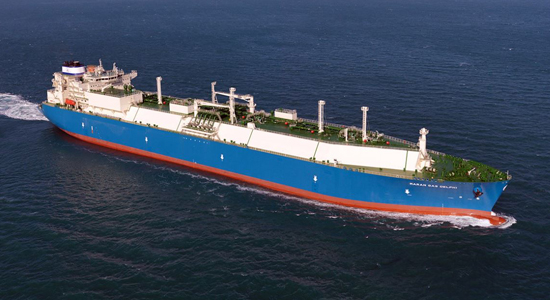The export of Liquefied Natural Gas (LNG) from Nigeria to China, Turkey, India and other countries has risen over the last six months.
Also, the Nigeria Liquefied Natural Gas (NLNG) has replaced six of its 23 vessels to boost gas shipping across the globe.
Other importers of gas from Nigeria include Egypt, Poland, Colombia, Jamaica, Jordan and Pakistan Sources at the Nigerian Ports Authority (NPA) said total of 388,000 metric tons of gas was exported through Onne Port in June.
“The liquefied gas was ferried out of the port by six vessels. LNG Adamawa carried 65,000 tons; LNG Oyo-68,000 tons; LNG Niger-68,000 tons; Finnima-II, 77,000 tons; Adam LNG-65,000 tons and LPG Pampero – 45,000 tons.
“In May, no fewer than six vessels exported 389,000 metric tons of gas to the international market,” the official said. Investigation revealed that exported with LNG Lagos II, 77,000 tons; LNG Kano, 68,000 tons; LNG British Sapphire 67,000 tons; LPG
Regina, 30,000 tons; LNG Port Harcourt II , 77,000 tons and LNG Concovado, 70,000 tons.
Also, 293,000 metric tons were exported through Onne Port while 274,000 tons were ferried from Warri Port in March and April.
At Onne Port, LNG Adamawa carried 65,000 tons; LNG Kano, 68,000 tons; LNG Cross Rivers; LNG Trinity Arrow carried 65,000 tons; and Silver Joan, 65,000 tons.
Similarly, from Warri Port, LNG Ogun shipped 68,000 tons; LNG Kano 65,000 tons; LNG Enugu 68,000 tons; and LNG Maran Gas Agamemnon, 70,000 tons.
Sources also said about 35,000 tons of LNG gas were shipped to other countries from Onne Port in February.
It was also revealed that the product was shipped by LNG Cross Rivers, 65,000 tons; LNG Goodside Goode, 70,000 tons; LNG Pskov, 70,000 tons; MT Aegean Wave, 25,000 tons; LNG Maran Gas Mystras, 65,000 tons and LNG Vuekiy Novgorod, 70,000 tons.
Meanwhile, Nigerian Ports Authority(NPA) has started depending on natural gas and bulk liquid cargoes as means of revenue due to the challenges faced by the ports in the eastern ports, as container and bulk cargo ships abandoned the ports.
Other challenges include: piracy, youth restiveness and terrorism, lack of effective monitoring of offshore operations and shallow depth of the long river channels.
It was gathered that Delta Port revenue generation was coming through LNG shipment and service boat operations, while Onne Port leverages on proceeds from Nigeria Liquefied Natural Gas (NLNG) operations to emerge as the highest revenue earners.
Nigeria To Witness Further Drop In Inflation Rate To
Analysts at FSDH have predicted that the June 2017 inflation rate will drop to 15.64 per cent from 16.25 per cent recorded in the month of May, 2017.
The National Bureau of Statistic (NBS) had revealed that inflation rate dropped to 16.25 per cent in May 2017, 0.99 per cent lower than 17.24 per cent recorded in April.
The decline reflects fourth consecutive decline in inflation rate since January 2017 as government continue to pump liquidity into the system and increase farm products.
According to the Lagos based research firm, the general price movements in the consumer goods and services in June 2017 would increase the Composite Consumer Price Index (CCPI) to 233.25 points, representing a month-on-month increase of 1.18per cent.
It said the increase in the price of food items moderated in the month of June compared with May 2017 adding that it also observed increases in some divisions that contribute to the Core Sub-Index, with the highest price observed in the clothing and footwear divisions.
It noted that, “The monthly Food Price Index (FPI) that the Food and Agriculture Organization (FAO) released today shows that the Index advanced further in June 2017. The Index averaged 175.2 points, 1.43per cent higher than the revised value for May 2017, and 6.89per cent higher than the June 2016 figure.
“Movement in the food prices were in varying directions. Dairy, cereal and meat prices were mostly responsible for the uptick in the value of the Index while sugar and oil prices depreciated. The FAO Dairy Price Index appreciated by 8.26per cent in June 2017. Prices of all dairy products which includes milk powders, cheese and butter appreciated significantly during the period. The FAO Cereal Price Index gained 4.21 per cent from the previous month, representing a one-year high.
“Wheat and rice prices firmed up and were primarily responsible for the uptick in the value of the Index. The FAO Meat Index was up by 1.85per cent on the backdrop of generally higher prices as import demand strengthened.’’






















